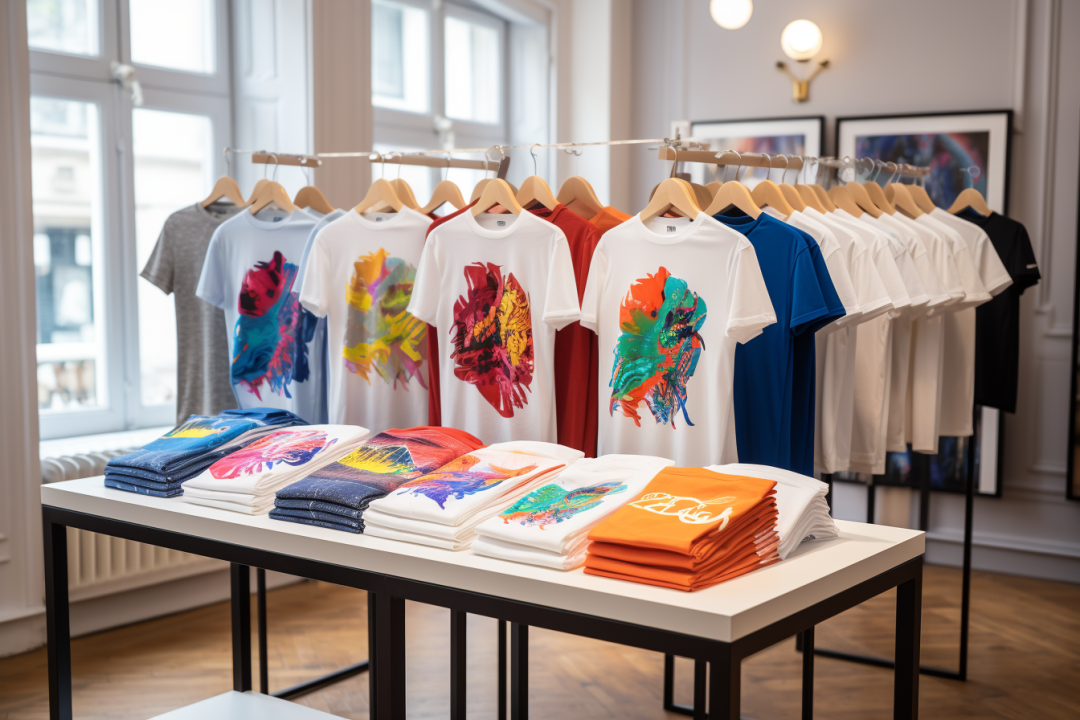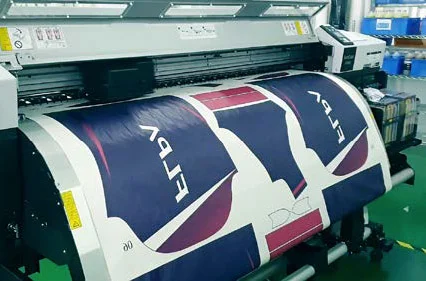Discovering the Advantages of Sublimation Printing for High-Quality Fabrics
Discovering the Advantages of Sublimation Printing for High-Quality Fabrics
Blog Article
A Comprehensive Guide to the Various Kinds Of Cloth Printing Methods
Starting an exploration of fabric printing techniques exposes a fascinating intersection of practice and innovation. Each approach, from the careful craftsmanship of block printing to the fast effectiveness of display printing, offers distinct purposes and supplies unique advantages. Digital printing's flexibility and environmental consciousness stand in stark contrast to the speedy modification of heat transfer printing. On the other hand, color sublimation printing captivates with its ability to create vivid, long-lasting layouts on artificial materials. To truly realize the subtleties and possible applications of these diverse strategies, a deeper investigation is important.
Block Printing
Block Printing, one of the oldest approaches of textile decor, has a rich background that dates back to old people. The process entails sculpting elaborate layouts into wooden blocks, which are after that dipped in color and pressed onto material to develop patterns.
The precision and workmanship associated with block printing make it a labor-intensive process, yet it additionally enables for a high degree of customization. Craftsmens can create special patterns by combining various blocks or varying the application of dye. This versatility has added to the enduring popularity of block printing in both conventional and modern textile style.
Block printing is specifically valued for its visual qualities, including the minor variants in pattern and shade that arise from the hand-printing procedure. These blemishes offer a distinct personality to each piece, distinguishing it from mass-produced fabrics. In spite of breakthroughs in contemporary printing innovations, block printing continues to be a treasured technique, celebrated for its historic significance and imaginative worth.
Display Printing
Screen printing, another noticeable fabric decor strategy, has changed the industry with its effectiveness and versatility. This method includes producing a pattern, called a display, and using it to apply layers of ink on the printing surface. Each color in the design calls for a different screen, which permits complex and vibrant multi-colored prints.

Among the vital benefits of display printing is its adaptability to different sorts of textiles, including cotton, polyester, and blends. This strategy is especially ideal for large-volume orders as a result of its cost-effectiveness and rate. The resilience of the prints is an additional substantial benefit, as the ink bonds well with the material, making certain lasting styles that withstand multiple cleans.
The procedure starts with preparing the displays by finish them with a light-sensitive solution. When dried out, the layout is moved onto the emulsion-coated display utilizing a UV light. The exposed locations harden while the unexposed components are washed away, creating a stencil. Ink is after that pushed via the stencil onto the fabric utilizing a squeegee.
Display printing is commonly used in the fashion sector, find out here promotional items, and custom apparel. Its ability for high-grade, comprehensive prints secures its status as a cornerstone method in textile printing.
Digital Printing
Digital printing has quickly become a cutting-edge strategy in the fabric sector, leveraging advanced innovation to create high-resolution styles straight onto material. Unlike traditional approaches, digital printing utilizes inkjet printers to deposit pigment or dye-based inks onto fabrics, making it possible for intricate and vivid patterns with an exceptional degree of information and shade accuracy.
One of the key advantages of digital printing is its flexibility. This technique permits on-demand printing, which substantially decreases waste and minimizes inventory expenses. In addition, it supports brief runs and customized styles, making it perfect for bespoke jobs and limited-edition collections. The elimination of screens and other setup requirements even more enhances effectiveness, decreasing manufacturing time and labor prices.
Furthermore, electronic printing is ecologically pleasant. heat transfer vinyl printing. It uses water-based inks and calls for much less water and power contrasted to traditional strategies, lining up with sustainable techniques. The accuracy of digital check here printing additionally allows using a broader variety of textiles, including cotton, silk, polyester, and blends, guaranteeing flexibility across numerous applications
Heat Transfer Printing
Just how does warm transfer printing transform fabric design? This approach has actually brought significant innovations by allowing dynamic and elaborate layouts to be moved onto a range of fabrics with amazing precision. Heat transfer printing includes making use of heat and pressure to transfer a style from a particularly formulated paper onto fabric. This process begins with publishing the preferred photo onto transfer paper using specialized inks. When the photo is printed, the paper is positioned onto the fabric and subjected to a heat press, which moves the ink from the paper to the textile.
Among the main benefits of warm transfer printing is its ability to produce high-grade, thorough pictures swiftly and effectively. It is especially appropriate for little manufacturing This Site runs and custom orders, making it a preferred choice for tailored garments and marketing things. In addition, this method is functional, suiting numerous kinds of fabrics including cotton, polyester, and blends.
Moreover, warm transfer printing is fairly cost-effective contrasted to other methods, as it needs marginal setup and lower first financial investment - Branded clothing. This affordability, combined with its ability for generating dynamic, resilient prints, emphasizes its pivotal function in modern-day fabric design

Dye Sublimation Printing
Dye sublimation printing, a sophisticated fabric printing technique, uses unparalleled vibrancy and long life for layouts on various artificial textiles. The published transfer paper is then positioned on the fabric, and both are subjected to high warm and pressure making use of a warmth press.
One of the key benefits of color sublimation printing is its capability to generate continuous-tone prints with vivid colors and detailed information. Unlike other printing methods, the dye comes to be part of the fabric instead than resting on top of it, resulting in a breathable and soft coating.
Verdict
Block printing is respected for its artisanal high quality, while display printing is beneficial for high-volume production. Digital printing offers adaptability and environmental advantages, whereas heat transfer printing is ideal for fast personalization.
Each approach, from the careful workmanship of block printing to the fast performance of display printing, offers one-of-a-kind purposes and uses unique advantages. Digital printing's flexibility and ecological consciousness stand in stark comparison to the quick modification of warmth transfer printing. Despite developments in modern-day printing modern technologies, obstruct printing stays a treasured technique, commemorated for its historical relevance and artistic value.
Dye sublimation printing, an advanced material printing strategy, supplies unmatched vibrancy and durability for styles on various artificial textiles. Digital printing provides adaptability and ecological advantages, whereas warm transfer printing is perfect for fast customization.
Report this page